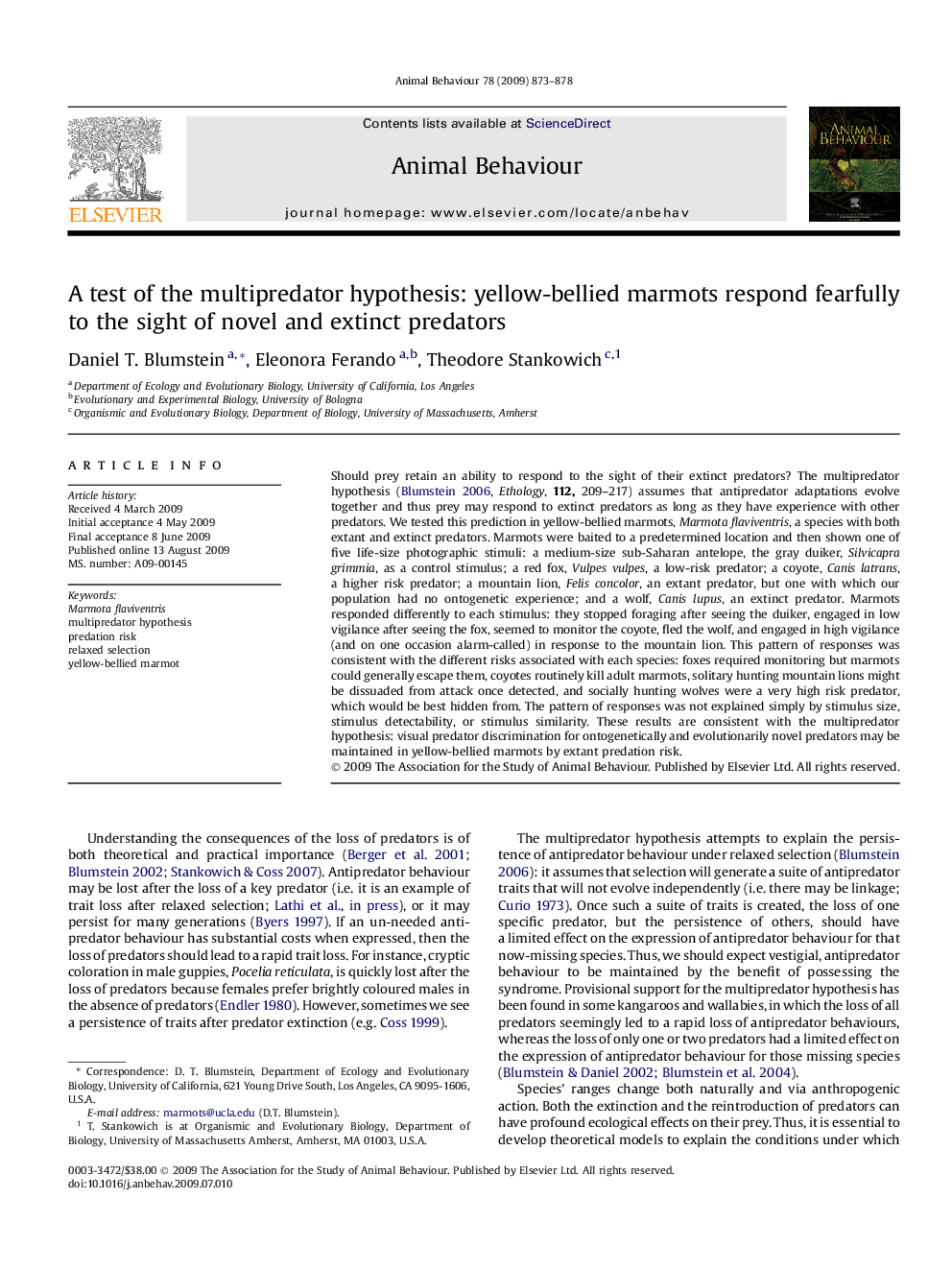| کد مقاله | کد نشریه | سال انتشار | مقاله انگلیسی | نسخه تمام متن |
|---|---|---|---|---|
| 2417856 | 1104330 | 2009 | 6 صفحه PDF | دانلود رایگان |

Should prey retain an ability to respond to the sight of their extinct predators? The multipredator hypothesis (Blumstein 2006, Ethology, 112, 209–217) assumes that antipredator adaptations evolve together and thus prey may respond to extinct predators as long as they have experience with other predators. We tested this prediction in yellow-bellied marmots, Marmota flaviventris, a species with both extant and extinct predators. Marmots were baited to a predetermined location and then shown one of five life-size photographic stimuli: a medium-size sub-Saharan antelope, the gray duiker, Silvicapra grimmia, as a control stimulus; a red fox, Vulpes vulpes, a low-risk predator; a coyote, Canis latrans, a higher risk predator; a mountain lion, Felis concolor, an extant predator, but one with which our population had no ontogenetic experience; and a wolf, Canis lupus, an extinct predator. Marmots responded differently to each stimulus: they stopped foraging after seeing the duiker, engaged in low vigilance after seeing the fox, seemed to monitor the coyote, fled the wolf, and engaged in high vigilance (and on one occasion alarm-called) in response to the mountain lion. This pattern of responses was consistent with the different risks associated with each species: foxes required monitoring but marmots could generally escape them, coyotes routinely kill adult marmots, solitary hunting mountain lions might be dissuaded from attack once detected, and socially hunting wolves were a very high risk predator, which would be best hidden from. The pattern of responses was not explained simply by stimulus size, stimulus detectability, or stimulus similarity. These results are consistent with the multipredator hypothesis: visual predator discrimination for ontogenetically and evolutionarily novel predators may be maintained in yellow-bellied marmots by extant predation risk.
Journal: Animal Behaviour - Volume 78, Issue 4, October 2009, Pages 873–878